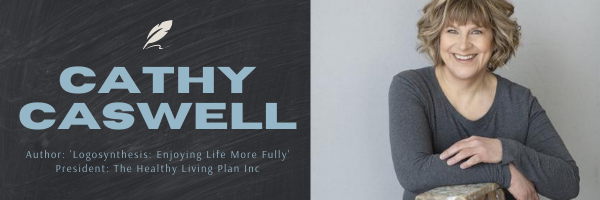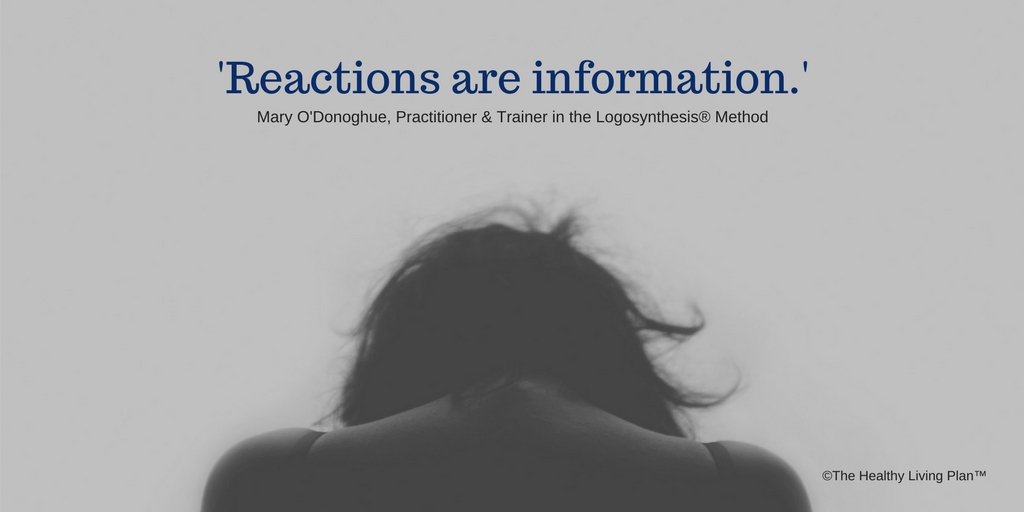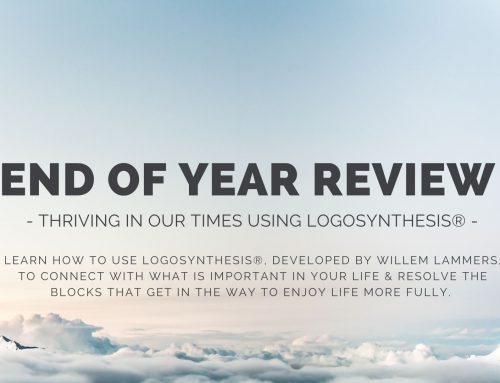Listen to feelings and emotions.

The Healthy Living Plan Inc. • January 2018
What if we view reactions as information? Feelings and emotions are our body’s response to life’s events, with traumatic events leading to intense emotions. Let’s explore this thinking.
If we touch a hot stove, we feel pain and quickly pull back. This moment is frozen. The next time we are around a stove, we know to check before we touch. If we see someone else reaching for a hot burner, we automatically react. In fact, this is one of the first things we teach our children, in an attempt that they don’t have to ‘learn the hard way’. Perhaps you have never touched a hot stove but you ‘got the message’ from the reactions of others. A moment has been frozen which influences your actions around a stove.
This same process is common in many areas of our lives, however we don’t always recognize it. When we feel anxiety, fear or depression, these are automatic responses to events in our past or perhaps, our reactions to what others have taught us.
Reactions are information. If we pay attention to our body responses when something happens in our lives, instead of telling ourselves we are feeling an emotion but instead name it as information – which is a reaction to the situation – we can use Logosynthesis to free the frozen energy in that moment.
(Mary O’Donoghue, Logosynthesis® Practitioner and Trainer)
When our body responds with an uncomfortable feeling, we usually want it to go away quickly. We avoid anything that triggers the feeling. We cover it up with busy activities or addictive habits. We blame others or think we are not ok. But what if we could simply dissolve the energy in the trigger so that our body no longer responded with feelings of anxiety, anger or depression? What if we could process where we are stuck so we could move forward without negative reactions?
One technique to process our emotions.
Dr. Willem Lammers has developed a beautiful guided process to effectively treat anxiety, depression, trauma and other stress-related symptoms using the power of words. The technique is simple, effective and easy to use, while based on an elegant philosophy for healing and personal development. The sequence of events can be briefly described as follows:
An event happens.
The moment is frozen.
A new event happens.
We react to the frozen moment.
We neutralize the reaction to the frozen moment.
Triggered?
We can often recognize that we are triggered. A pounding in the head. A pit in the stomach. A sudden sensation through the core. All of a sudden, our body responds and we don’t seem to have any control. In that moment, we don’t stop to think about breathing deeply and staying calm. Our body is reacting to something and has converted to autopilot.
So how can we approach it? We acknowledge that we reacted to something that is uncomfortable and decide to explore the reaction. Through self-coaching or with a trained practitioner, we can apply the guided process to process the issue.
Application to mental health.
When an event occurs that activates a frozen moment, our stress response kicks in. Our brain receives the signal and sends out stress hormones, which very quickly causes us to feel uncomfortable emotions. The challenge is that we are rarely aware of what the frozen moment is and therefore, our reaction appears to be completely irrational. For example, a teacher’s voice may trigger a response to an upsetting event as a child, perhaps in the form of a scolding or an embarrassing situation. Because you don’t recollect the initial event, you may feel uncomfortable each time you walk into this classroom without knowing why. Depending on the intensity of the initial event, your anxiety may be quite strong – without a rational explanation.
Yes – your brain may be kicking into action and releasing stress chemicals, but the trigger is not in the brain. The trigger is a frozen, energetic structure. An image. A sound. A smell. As we begin to use our reactions as information, we can identify, localize and neutralize these triggers. We can begin to release some of this stuck energy to better cope and enjoy life more fully. If we can be curious and feel safe with the uncomfortable, we can process our perceptions of life’s events so they don’t continually derail us and affect our mental health.
Learn more about the Logosynthesis® method as a tool:
Give me a call or contact me.
For my experience along with helpful tips, read Logosynthesis: Enjoying Life More Fully (Caswell, 2017)
For a quick how-to book, read Letting It Go: Relieve Anxiety and Toxic Stress in Just a Few Minutes Using Only Words (Weiss, 2016)
To learn from the founder of Logosynthesis, read Logosynthesis: Healing with Words (Lammers, 2015) and Self Coaching with Logosynthesis (Lammers, 2015)
For a video on using the technique, watch Let’s try Logosynthesis (Lammers, 2015)





